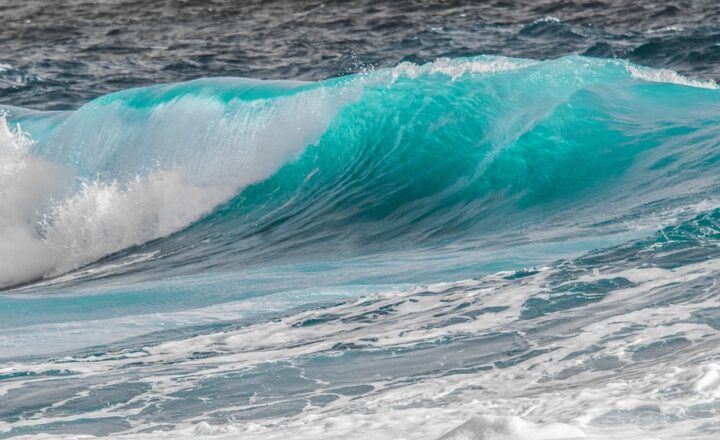Fishing for Facts: Unearthing the Weirdest Fish Species You’ve Never Heard Of
November 17, 2024

When it comes to the vast and largely unexplored underwater world, fish species often captivate our imagination. While many people are familiar with common species like salmon, trout, and tuna, there exists an entire universe of bizarre, seldom-seen fish that can intrigue any marine enthusiast or casual observer alike. From creatures that look as if they’ve emerged from a science fiction film to enigmatic dwellers of the deep sea, let’s dive into the details of the strangest fish species that you may have never heard of before.
1. The Dumbo Octopus: The Floppy-Eared Wonder
The Dumbo octopus (Grimpoteuthis spp.) is an adorable cephalopod renowned for its ear-like fins that resemble the ears of Disney’s Dumbo. These deep-sea dwellers are found at depths of around 8,500 feet and are characterized by their gelatinous bodies and mesmerizing movement, which has a certain grace and beauty. Rather than swimming like conventional octopuses, the Dumbo octopus flaps its ear-like fins to propel itself through the water.
Despite their cute appearance, they are fascinating predators, feeding mainly on small fish and invertebrates. The striking presence of the Dumbo octopus captivates researchers and marine life enthusiasts, making them a must-see in deep-sea documentaries.
2. The Goblin Shark: The Living Fossil
Often referred to as the “living fossil”, the Goblin shark (Mitsukurina owstoni) is a unique species of deep-sea shark, notable for its long, flat snout and its astonishing protruding jaws. Discovered in the late 19th century, it has changed very little over the millennia, which is a key reason it has earned its peculiar nickname.
Goblin sharks can be found in deep waters worldwide, lurking at depths greater than 100 meters. Their long, pink bodies allow them to blend in with the ocean floor, making them effective ambush predators. When hunting, they can extend their jaw forward to capture prey in a swift, startling motion. This jaw extension combined with the eerie appearance makes the Goblin shark one of the most bizarre fish species known.
3. The Axolotl: The Marvelous Mexican
Monster Fish
Although technically not a fish, the Axolotl (Ambystoma mexicanum) is an aquatic salamander that has fascinated biologists and pet enthusiasts alike. Originally native to the waters surrounding Mexico City, this unusual creature is known for its capacity to regenerate lost body parts, including limbs, spinal cords, and even parts of its heart.
Axolotls remain in their larval form throughout their lives, effectively making them perpetual ‘teenagers’ of the aquatic world, a phenomenon scientifically termed neoteny. Not only do they have an adorable appearance—complete with external gills that fan out like flower petals—but they also play a significant role in scientific research due to their ability to regenerate.
4. The Poodle Moth: The Furball of the Sea
The Poodle moth (Lycèna pheride) might not be a fish either, but it is a captivating creature that looks absurdly like a poodle that has been submerged underwater for a while. This fuzzy insect was discovered in 2009 and garnered attention due to its unique appearance and unfortunate resemblance to a pet that either needs grooming or is haunting your dreams.
With a body covered in soft, furry tufts and wings that seem to belong to a different era, the Poodle moth thrives at higher altitudes in Venezuela and has become a symbol for entomologists studying evolutionary biology. Its uncommon and quirky physical traits have left many wondering if this creature is just a figment of our imagination.
5. The Blobfish: The Poster Fish for Weirdness
Famously dubbed as the world’s ugliest fish, the Blobfish (Psychrolutes marcidus) resides in the deep waters off Australia and Tasmania. This gelatinous creature has garnered a sort of cult status online, thanks to its soft, squishy body that seems to collapse into a gnarled mass when brought to the surface due to the changed pressure.
Blobfish primarily thrive at depths around 600 to 1,200 meters where the pressure is much higher, allowing them to maintain their form in a way that defies gravity and ordinary expectations. This fish feeds on whatever comes its way, whether it be crabs, mollusks, or even discarded waste from fishing boats. Its unfortunate and comical appearance, coupled with its environmental significance, makes it a fascinating subject of discussion in marine biology.
6. The Frilled Shark: The Aquatic Dinosaur
The Frilled shark (Chlamydoselachus anguineus) is characterized by its long, eel-like body and multiple frilled gills, making it resemble an ancient sea predator reminiscent of prehistoric times. This shark can be found in the ocean’s depths off the coasts of parts in the United States, Japan, and New Zealand, and is often captured for scientific research due to its rarity.
Notably, frilled sharks have 300 teeth arranged in 25 rows, allowing them to snag slippery prey such as squid. They can also go for long periods without eating, making them formidable predators of the night. Their distinct appearance and latent biological features make them a significant component of marine biodiversity and inspire interest in the evolution of sharks through time.
Conclusion
The underwater realm is filled with astonishing life forms, and while many of them remain alien to us, the existence of weird fish species adds to the beauty of biodiversity. From deep-sea dwellers with unique adaptations to peculiar organisms that challenge typical definitions of fauna, these fish remind us that the ocean holds secrets waiting to be discovered. So, the next time you’re out fishing—or just on the internet—consider taking a moment to appreciate the wonders of the aquatic kingdom and all its inhabitants who, in their own way, contribute to the intricate tapestry of life on our planet.
Remember, the ocean is still largely uncharted territory. Who knows what other remarkable discoveries lie beneath the surface, just waiting to inspire astonishment and awareness among enthusiasts, researchers, and casual observers alike.







